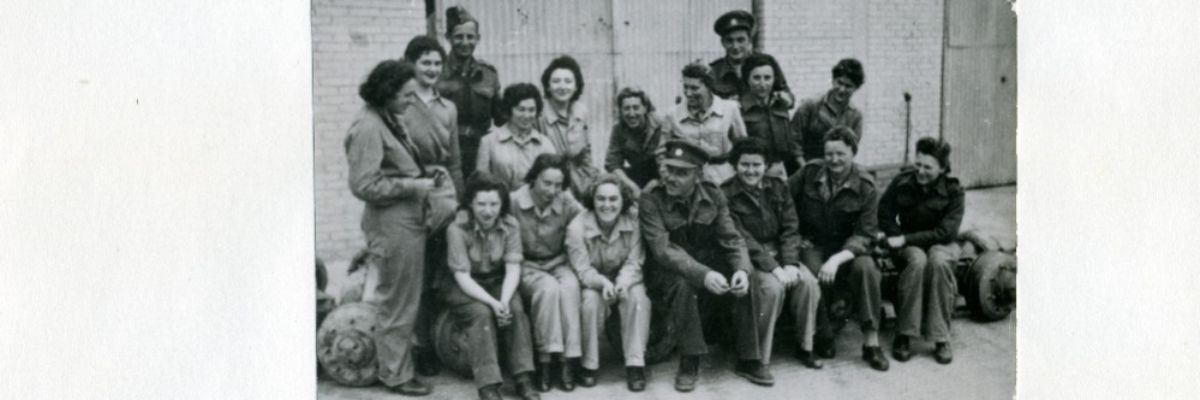
Hidden warriors. Women who were actively involved in World War II
20. 12. 2021
World War II also had its heroines. In the British Army Auxiliary Corps, Czechoslovakian women served not only as cooks or office workers, but also as drivers, meteorologists, interpreters, armorers and convoy commanders. Karolína Stegurová from the Institute of Contemporary History of the CAS follows the trace of their courage and fate.
Edita Zochovická was one of the most prominent women in the Middle East during the Second World War. As a Czechoslovak officer, she first qualified as a driver in the British ATS (Auxiliary Territorial Service), and when she completed her officer's course, she often commanded convoys. However, her service for the British Army as well as her Jewish background became a liability after 1948.
"I was contacted by a cousin of Mrs Zochovická's and told that he had a draft of an unfinished manuscript of her memoirs," explains Karolína Stegurová from the Institute of Contemporary History of the CAS, providing details of how she came across the story of the Czechoslovak officer. "Unfortunately, there are very few documents and literature of a memoir nature."
Yet, there were not only few similar fates of Czechoslovak women. More than two hundred of them passed just through the British Army Auxiliary Corps. They were employed in dozens of occupational and highly specialized fields - from office workers to technical drawers. The primary mission of the British Corps was to free up men for the needs of war.
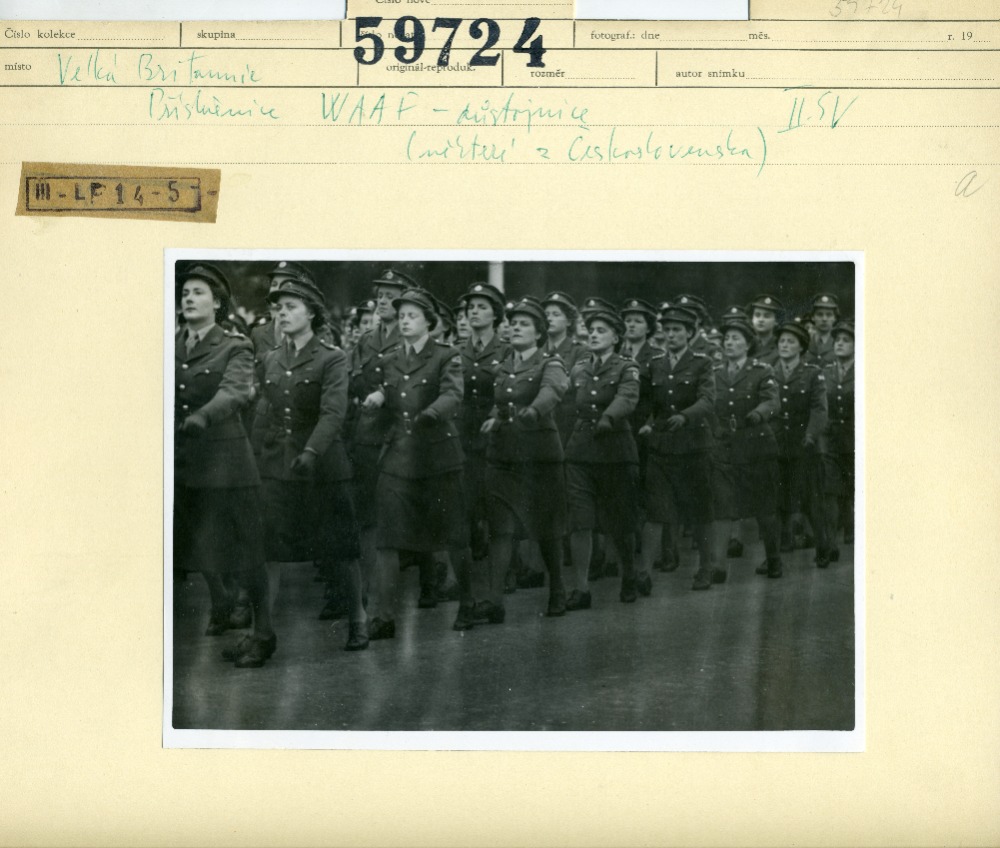
Members of the WAAF - commissioned officers. Some of them might have been from Czechoslovakia.
Women wanted to fight too. But no one wrote about it
Karolína Stegurová was inspired to map the fates of the war heroines by the Heaven Riders movie, but she found out that there was very little information available. During her doctoral studies, she went to England and visited British archives, especially the National Archives in Kew. Materials from the British archives substantially complemented the overall context of the formation, organization, recruitment and operation of the British ATS and WAAF Auxiliary Corps (WRNS). Gradually, the following book was written, mapping the participation of women in the army: Women Wanted to Fight Too. Czechoslovak women in the British Army Auxiliary Corps ATS and WAAF during the Second World War.
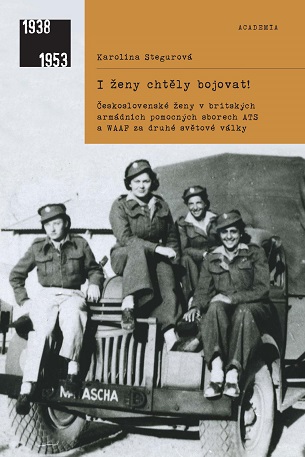
The book Women Wanted to Fight Too... was published by Academia.
"In addition to the aforementioned, I also focus on the way of recruitment to the auxiliary corps, their official promotion to the British public, and on the general British war policy regarding the involvement of women in the war effort," says Karolína Stegurová.
Training and personal memories
Other parts of the book gradually analyze the training and the daily service of Czechoslovak women in the British army, both in Great Britain and, from 1943, in the Middle East. In addition to archival materials, Karolína Stegurová has tried to make the chapters vivid with personal memories and testimonies of the women themselves.
One of them was Hana Vogelová, who enlisted in the British WAAF in November 1941. She was one of the few Czechoslovak women assigned to the Czechoslovak 311th Bomber Squadron, where she worked as a clerk, technical translator and interpreter. For the time of four years, she connected her life with the wartime fates of the Czechoslovak airmen.
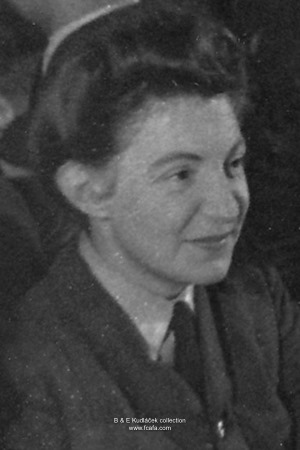
Hana Vogelová joined the british WAAF in November, 1941.
"Many of them visited Hana's office after air operations for coffee, during which they discussed various situations and wartime events. This is probably why Hana Vogelová later came up with the idea of stitching together several pieces of the aviation canvas and collecting the signatures of the individual airmen. In three years, she collected over 400 signatures, many of which remain the only memory of those who never returned from their operational flights," says Karolína Stegurová.
There were no auxiliary corps in the Czechoslovak army
One of the questions that the researcher wanted to answer was why similar female auxiliary corps, which, in cooperation with the Brits, were gradually formed by, for example, the Polish, French or Norwegian army-in-exile, were not also formed directly by the Czechoslovak army?
"The reasons for not creating a similar corps of women directly in the Czechoslovak army, given in 1941, were legal reasons, such as a necessary change of the conscription law or the fact that there was no use for women in the units," says Karolína Stegurová. According to the archives, however, it was essential to fill the places in the auxiliary corps with men with a lower medical classification.
Women in the resistance
In addition to the army auxiliary corps, however, Czechoslovak women were significantly involved in a diverse range of operational and support activities in the domestic resistance in the Protectorate of Bohemia and Moravia. The bravery and sacrifice of those Czechoslovak women who participated in hiding and helping the Czechoslovak paratroopers Kubiš and Gabčík was mentioned even in the contemporary German reports. Women also contributed to the fight against Nazism outside the Protectorate. In addition to Great Britain or the Middle East, it was, for example, in Yugoslavia or the Soviet Union.
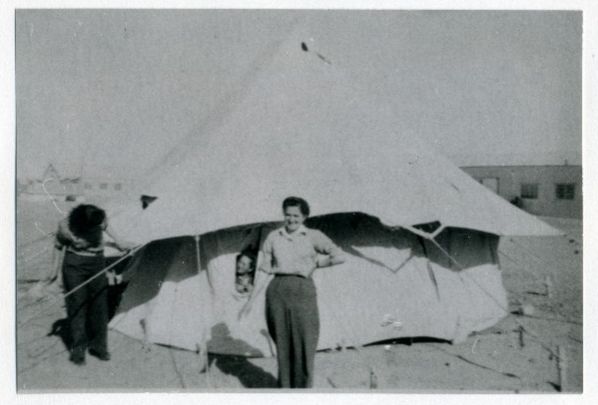
Czechoslovakian women in the Tel el kebír, Middle East.
Text: Eliška Zvolánková, Division of External Relations, CAS Centre of Administration and Operations
Photo: Military Central Archive, Free Czechoslovak Air force
Read also
- A trapped state: The pandemic impact on public attitudes, trust, and behavior
- Aerial archaeology: Tracing the footsteps of our ancestors from the sky
- Archaeologists uncover ancient finds along Prague Ring Road
- Our microbiome largely depends on what we eat, says microbiologist Michal Kraus
- The ABCs of writing: Why did its invention mark a turning point for humankind?
- We learn, remember, forget… What can memory actually do? And can we outsmart it?
- New Center for Electron Microscopy in Brno opens its doors to global science
- The hidden lives of waste: What can we learn from waste workers and pickers?
- A unique lab is hidden right beneath Prague’s Vítkov Hill
- Renewables are a strategic investment in European security, scientists say
The Czech Academy of Sciences (the CAS)
The mission of the CAS
The primary mission of the CAS is to conduct research in a broad spectrum of natural, technical and social sciences as well as humanities. This research aims to advance progress of scientific knowledge at the international level, considering, however, the specific needs of the Czech society and the national culture.
President of the CAS
Prof. Eva Zažímalová has started her second term of office in May 2021. She is a respected scientist, and a Professor of Plant Anatomy and Physiology.
She is also a part of GCSA of the EU.